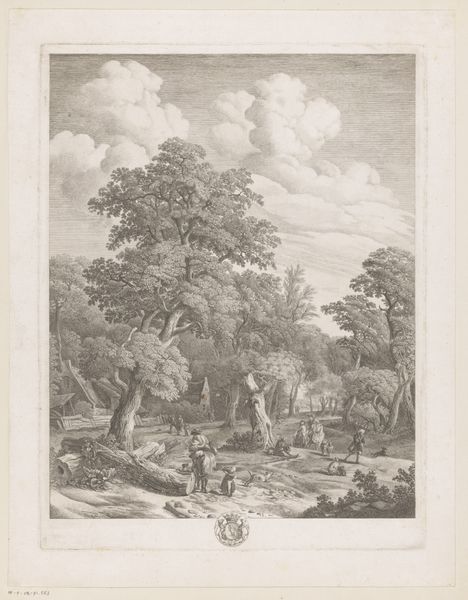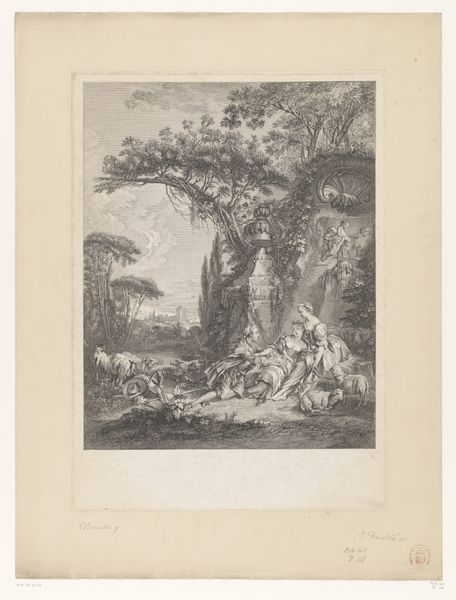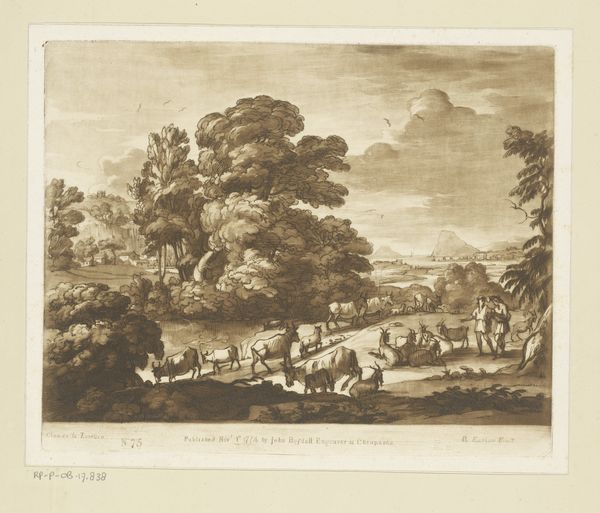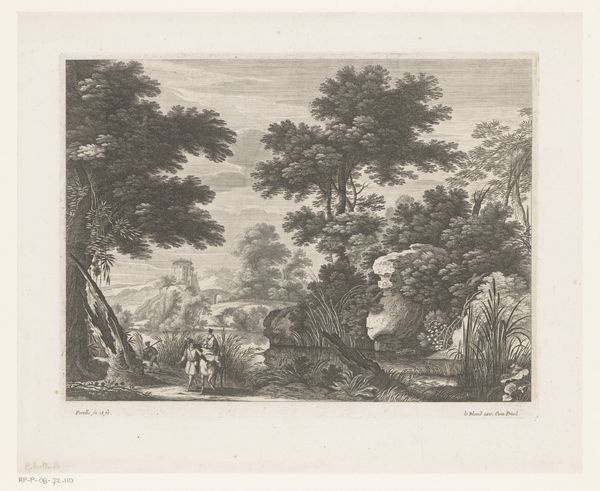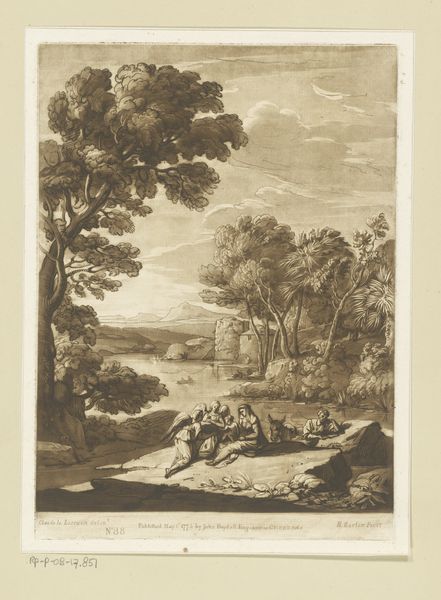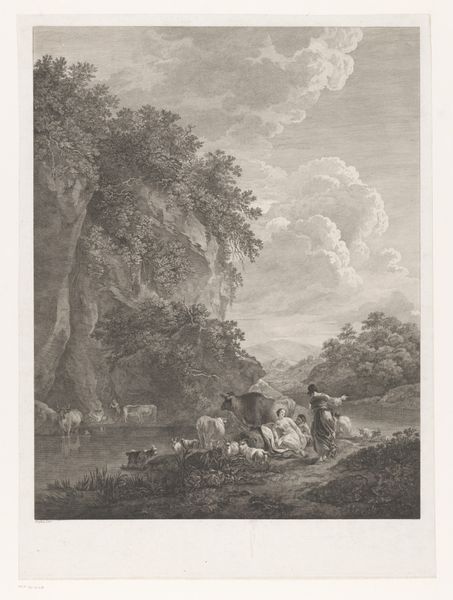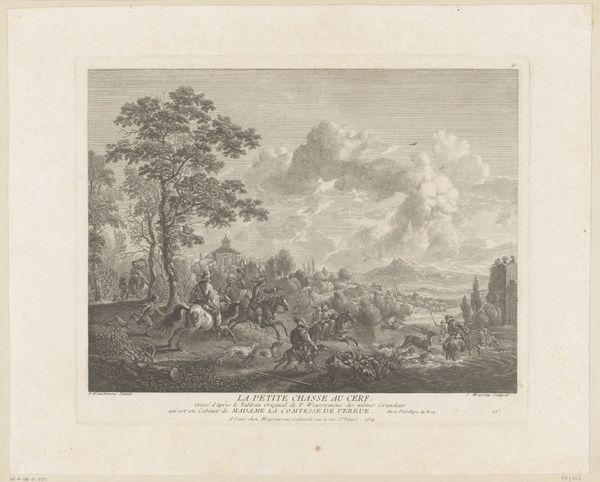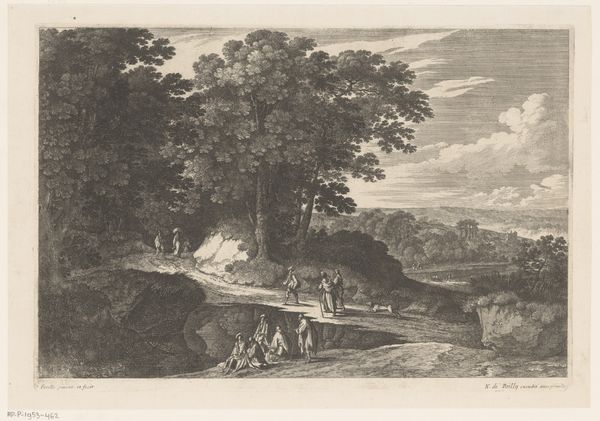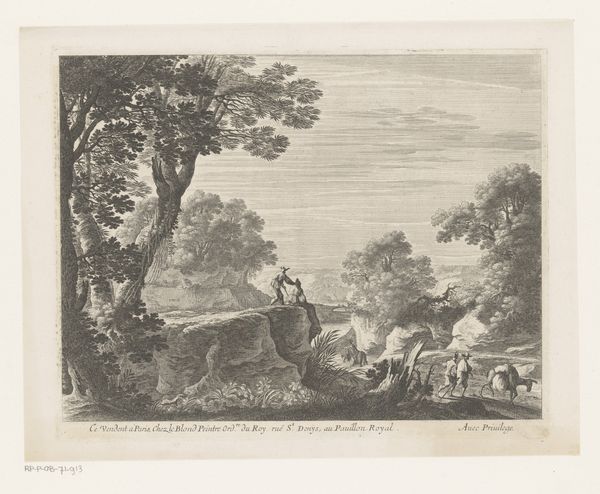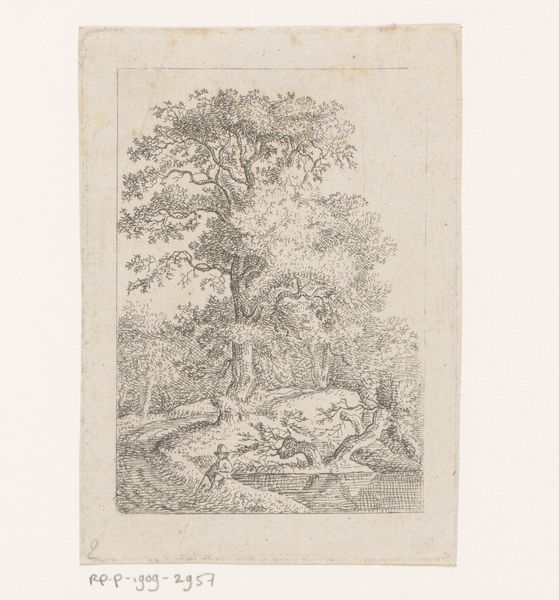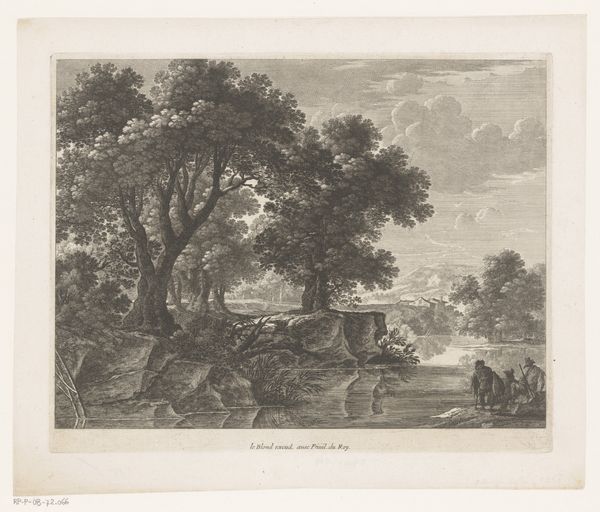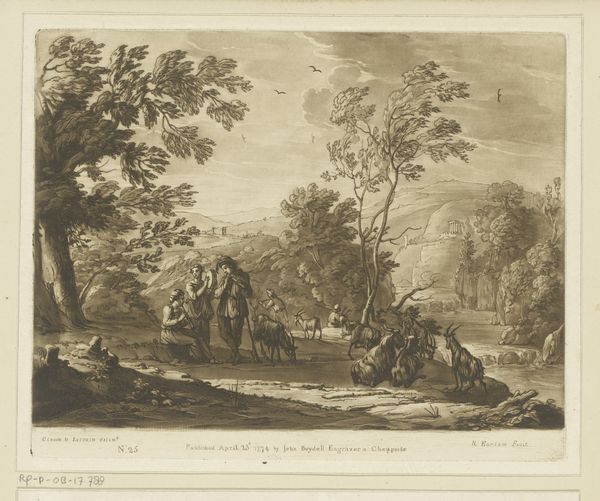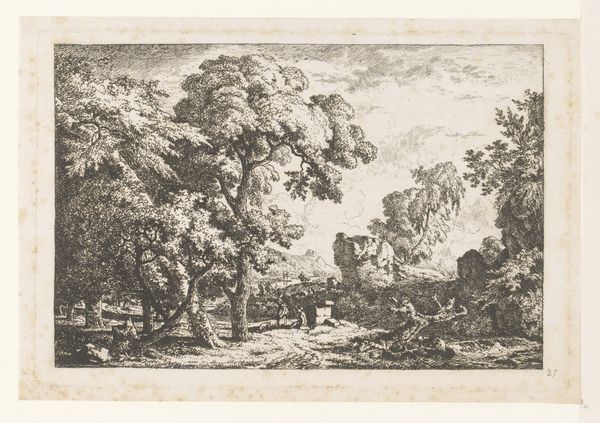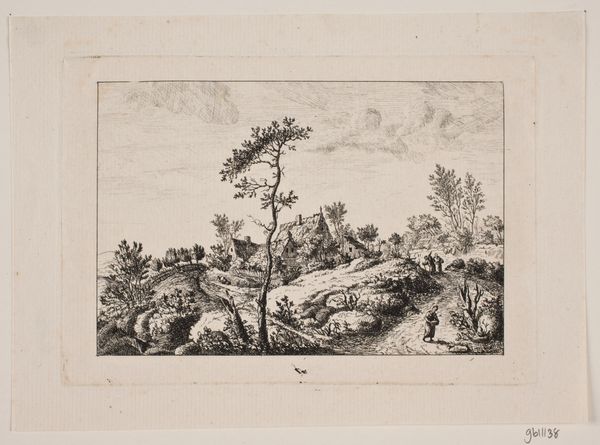
engraving
#
landscape
#
figuration
#
history-painting
#
engraving
#
rococo
Dimensions: height 485 mm, width 368 mm
Copyright: Rijks Museum: Open Domain
Editor: So, this is "Bathing Women," a 1761 engraving by Jean Daullé, housed in the Rijksmuseum. I’m really struck by how idyllic it seems, but also... theatrical? It's like a scene from a play. What’s your interpretation? Curator: The theatricality you perceive is quite fitting for Rococo, the art of the court. Daullé has translated a painting into a print which allows it to become more widely accessible and the focus on female figures bathing pulls on classical ideas around leisure, beauty and the body, making this print particularly consumable for wealthy men. Have you noticed how the composition stages them like players on a proscenium? Editor: Yes! And that sense of voyeurism too – we, as viewers, are positioned almost as though we're intruding on a private moment. Is that a common theme of the time? Curator: Absolutely. The print market was burgeoning, and images that titillated and entertained were highly sought after. Prints after paintings, like this, democratized access to art, yet perpetuated certain power dynamics and social norms. Are there other figures or elements in the landscape you find significant? Editor: The man standing slightly apart… It’s an interesting inclusion, as his back is turned to the viewer. I'm guessing his role isn't simply as a bather. Curator: Exactly. Consider him a spectator, a representative of the male gaze, his presence framing how we interpret the women. How do you think the Rococo style, which emphasizes ornamentation and pleasure, affects the overall message of the piece? Editor: It’s interesting that this seemingly frivolous style serves to, perhaps unintentionally, reinforce social and gender hierarchies. It feels like something created in the style is making comment about the society which created it. Curator: Precisely! Understanding the historical context really shifts our perspective, doesn’t it? What at first appears decorative reveals layers of socio-political commentary. Editor: I see that now! It changes everything to know that, thank you.
Comments
No comments
Be the first to comment and join the conversation on the ultimate creative platform.
